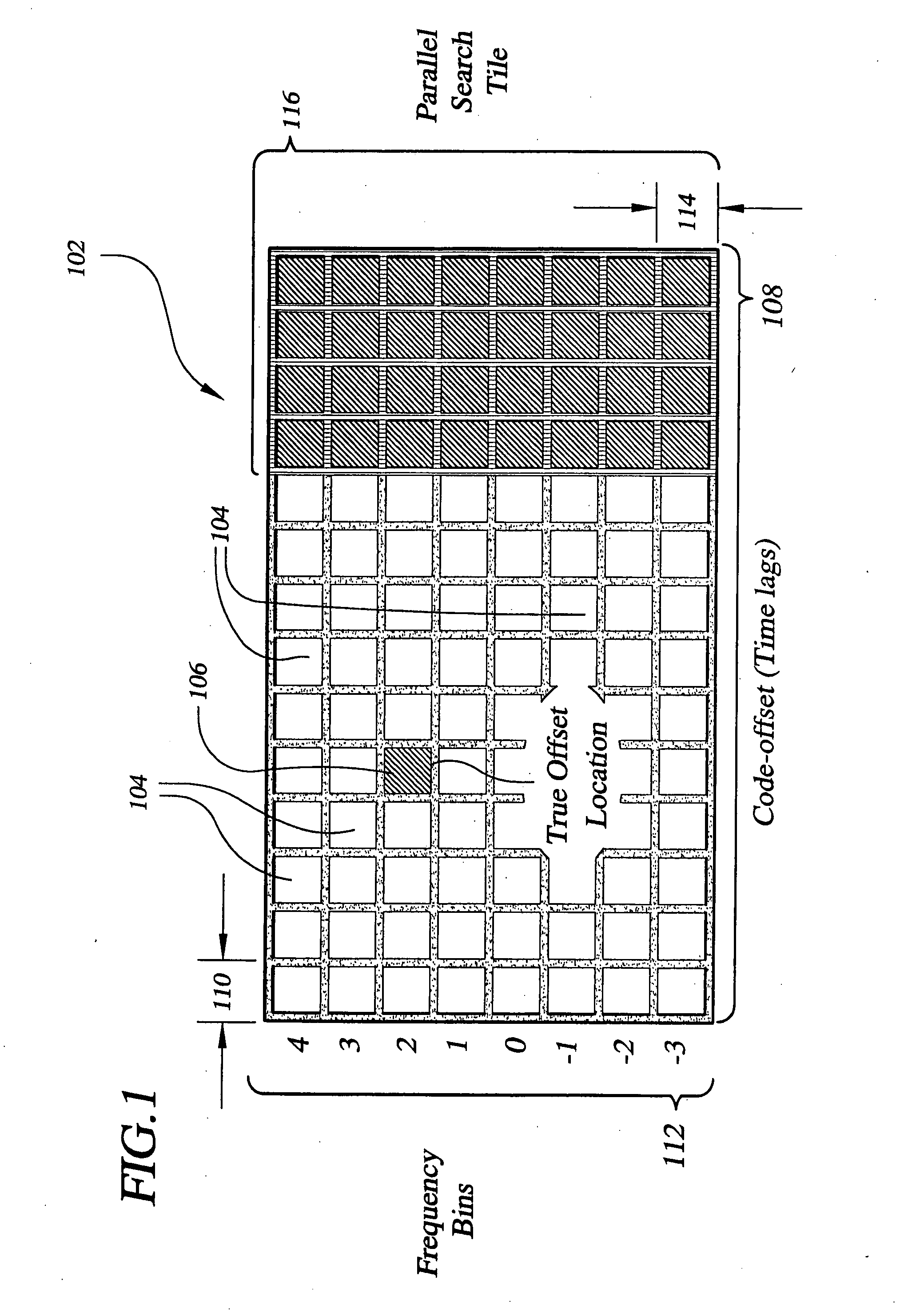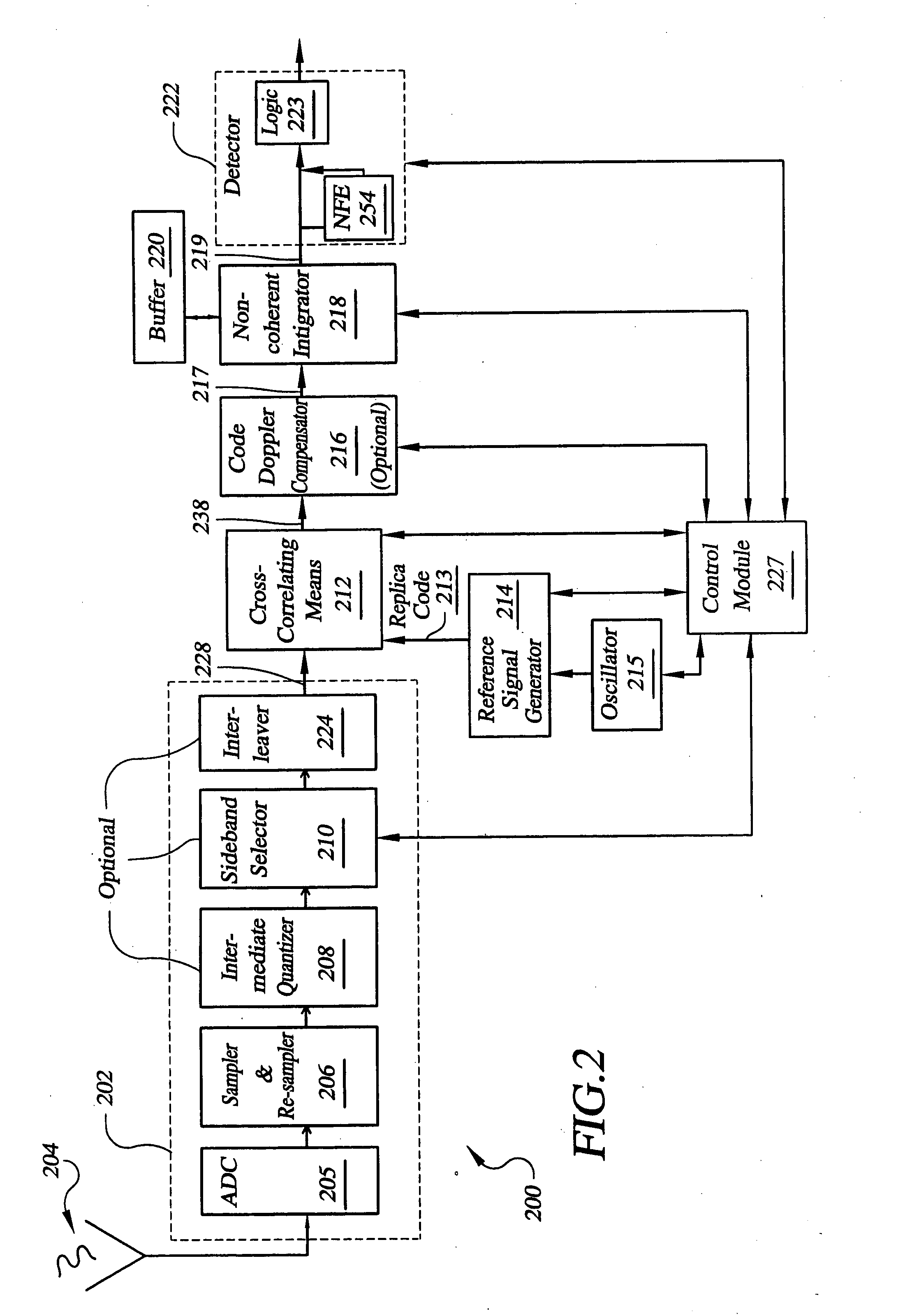System for direct acquisition of received signals
a technology for receiving signals and receiving systems, applied in the field of signal processing, can solve the problems of inability to accurately predict the internal timing and frequency reference of the receiver, and computationally complex methods for direct acquisition of boc modulations
- Summary
- Abstract
- Description
- Claims
- Application Information
AI Technical Summary
Benefits of technology
Problems solved by technology
Method used
Image
Examples
Embodiment Construction
[0041] Preferred embodiments of the invention will now be described with reference to the accompanying drawings.
[0042] Although much of the description that follows addresses GPS receivers for BOC modulated signals, and specifically M code GPS signals employing BOC (10,5) modulation, the description of specific embodiments is intended for exemplary purposes only and by no means meant to be limiting. For example, it will be understood by artisans that the cross-correlation architectures described are also suitable for use in systems (e.g., radar) wherein the signals to be correlated will not be spread spectrum signals.
[0043] Each of the cross-correlation and signal processing architectures disclosed herein enable an increase in hardware efficiency when compared to existing technologies. Each architecture employs a separate technique that may be found alone in a SPA or in combination with the other described innovations.
[0044] Simplifications described below lend themselves to inte...
PUM
 Login to View More
Login to View More Abstract
Description
Claims
Application Information
 Login to View More
Login to View More - R&D
- Intellectual Property
- Life Sciences
- Materials
- Tech Scout
- Unparalleled Data Quality
- Higher Quality Content
- 60% Fewer Hallucinations
Browse by: Latest US Patents, China's latest patents, Technical Efficacy Thesaurus, Application Domain, Technology Topic, Popular Technical Reports.
© 2025 PatSnap. All rights reserved.Legal|Privacy policy|Modern Slavery Act Transparency Statement|Sitemap|About US| Contact US: help@patsnap.com



